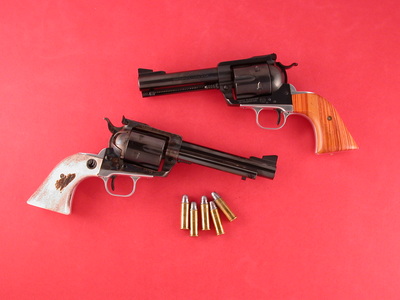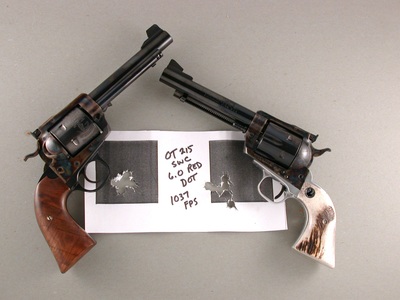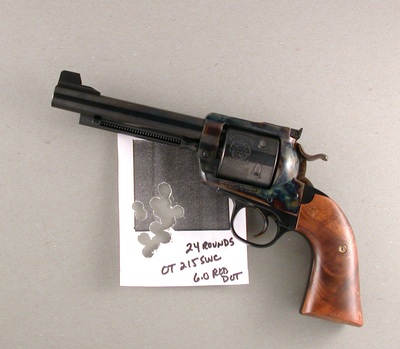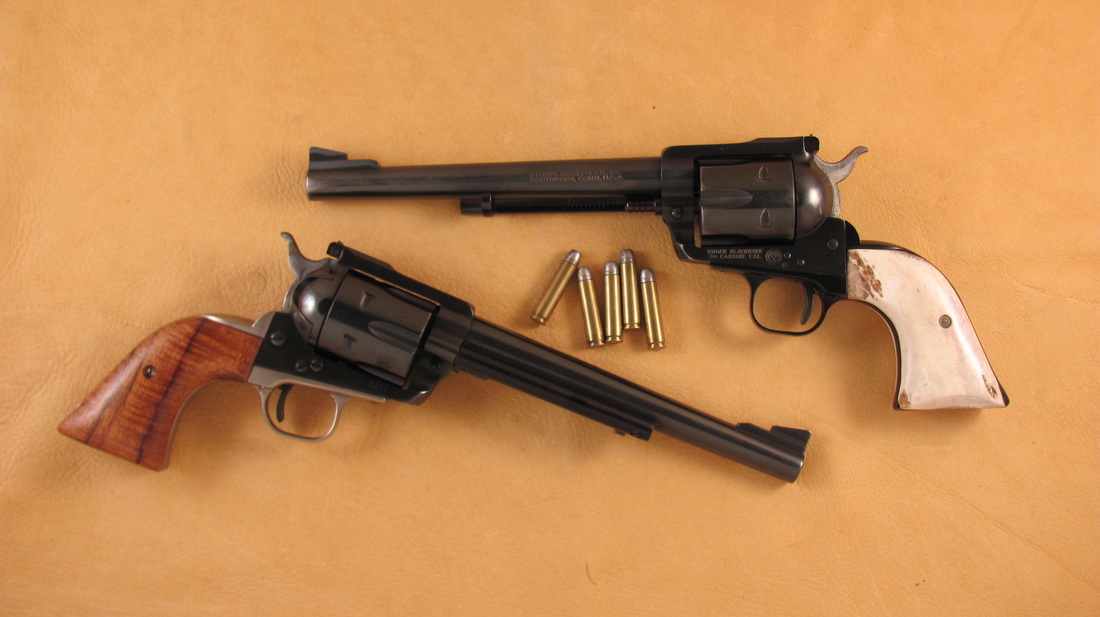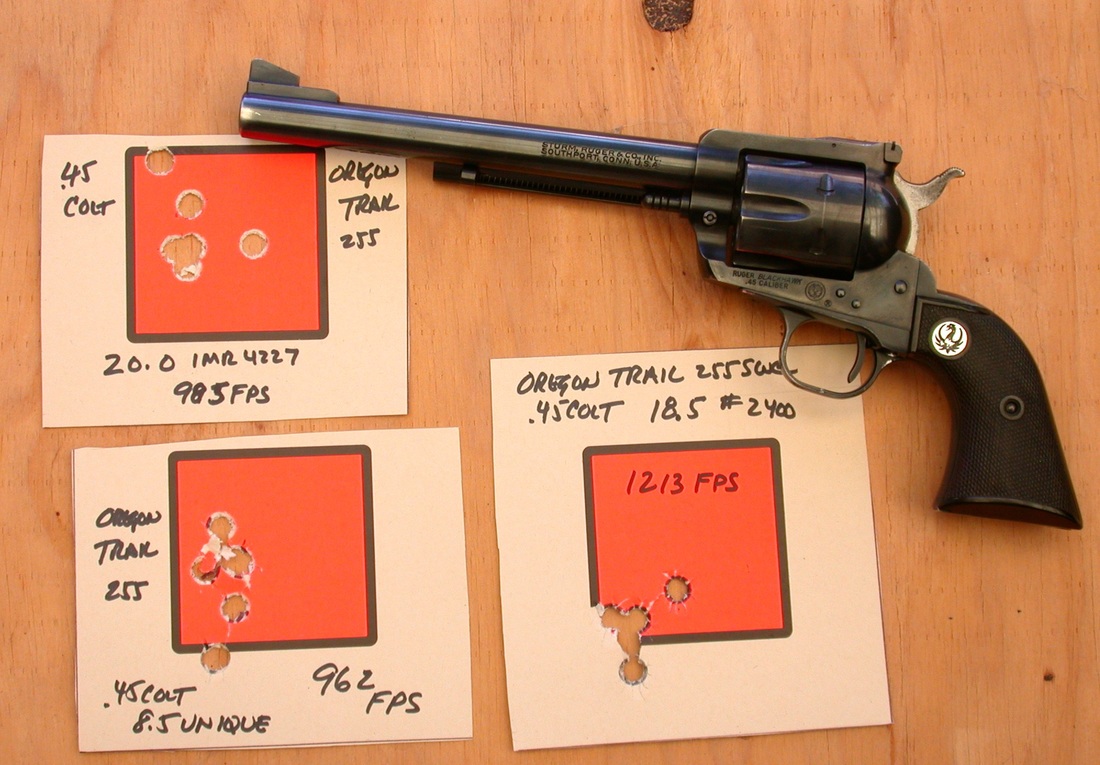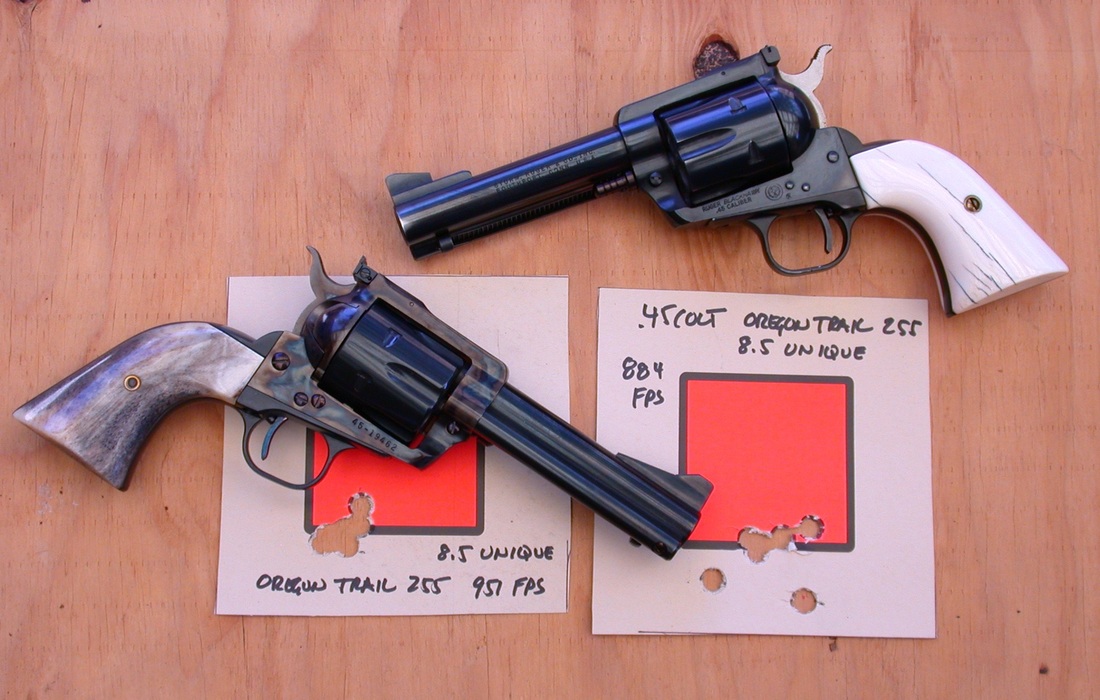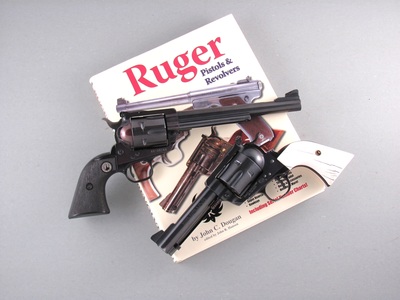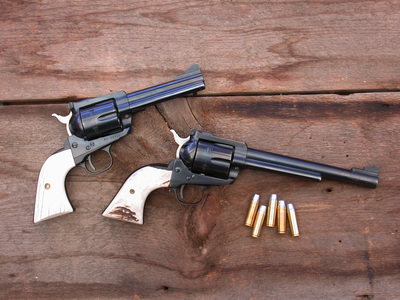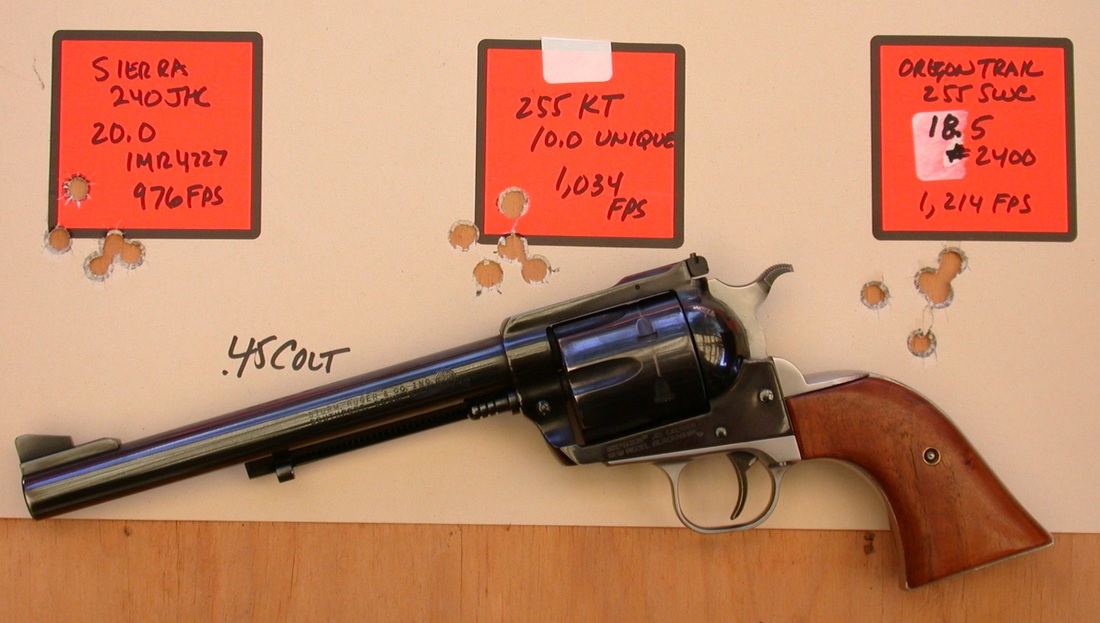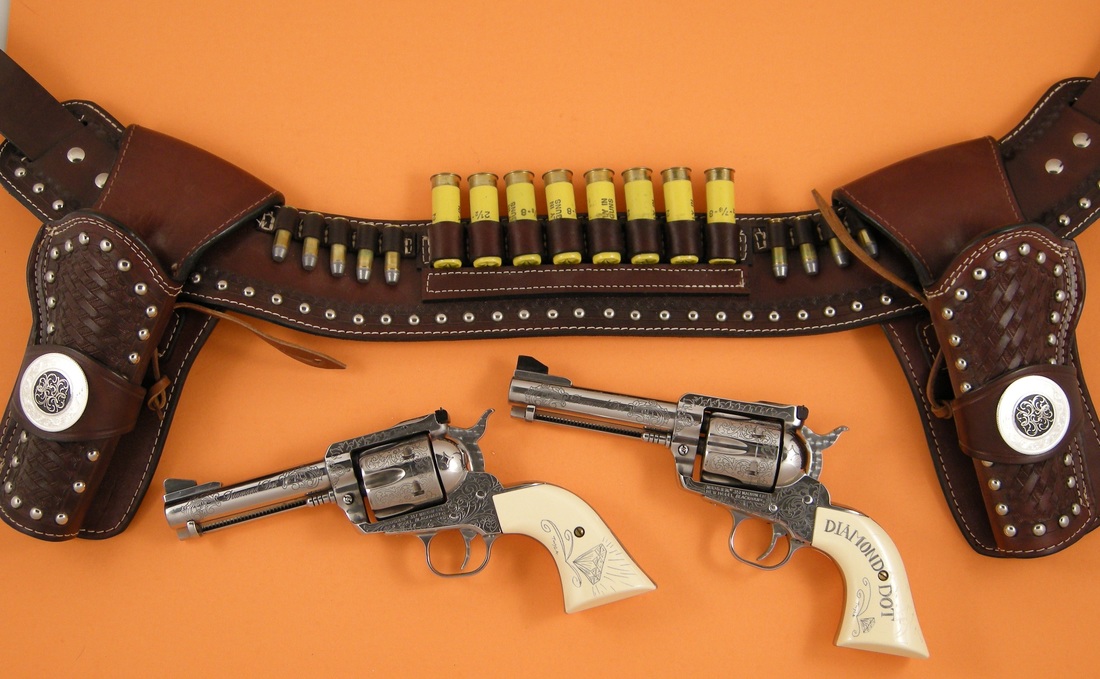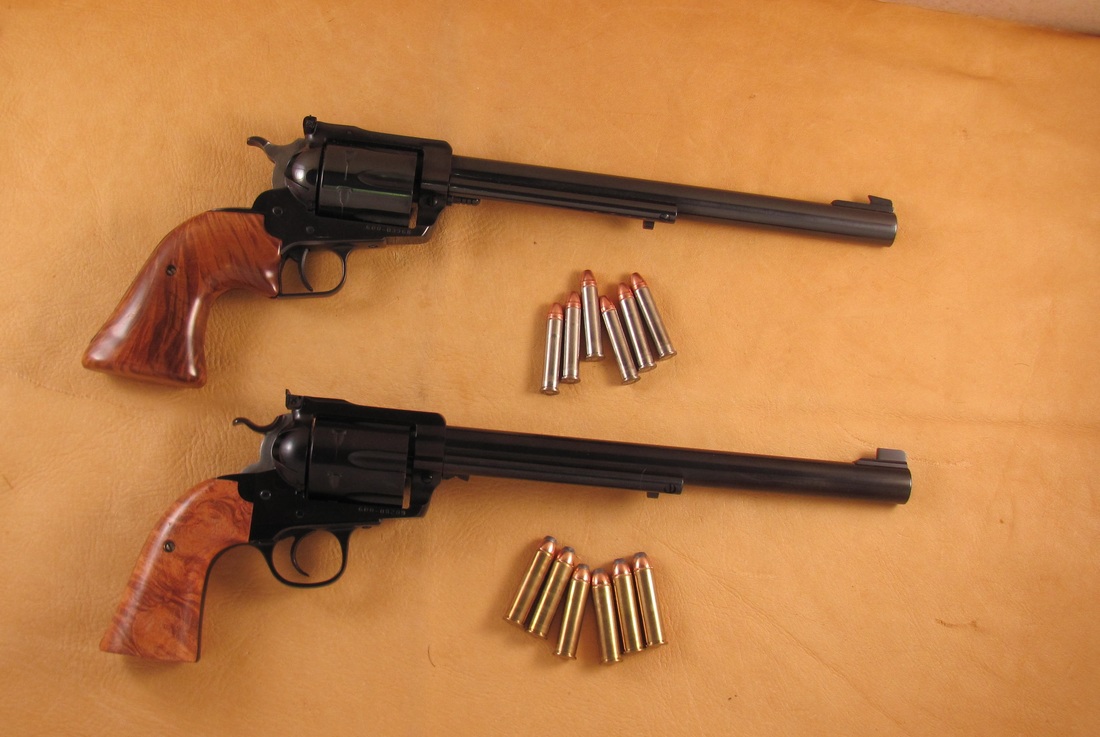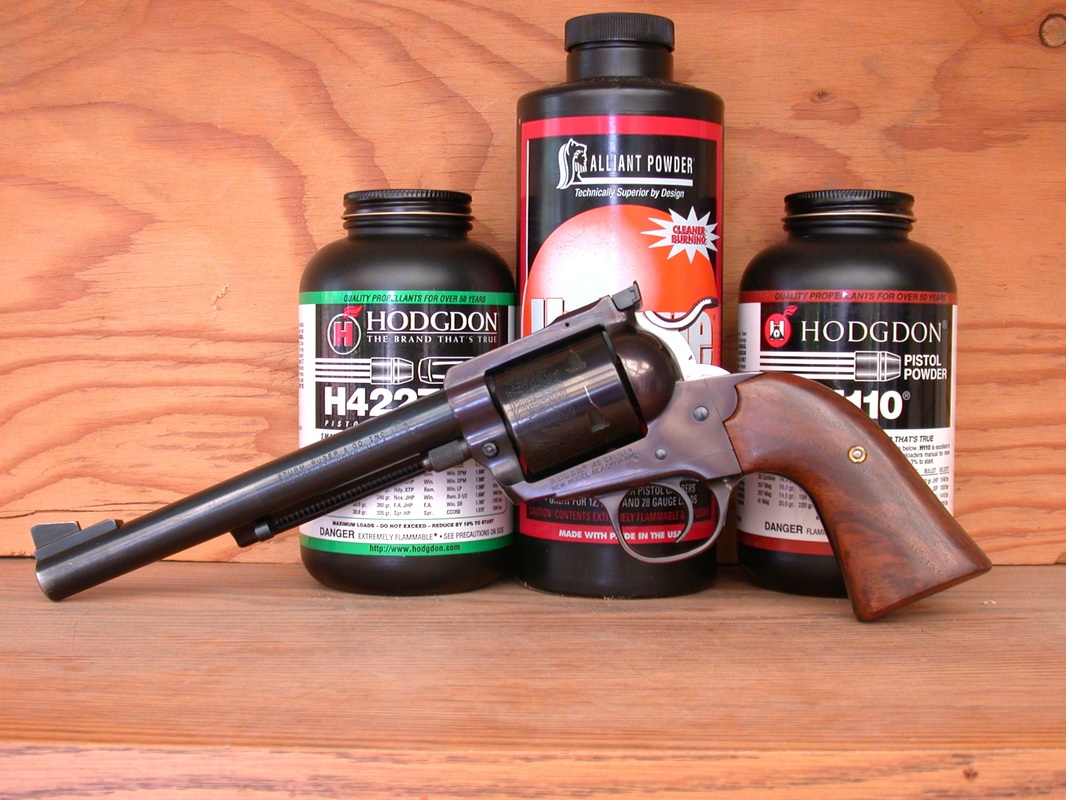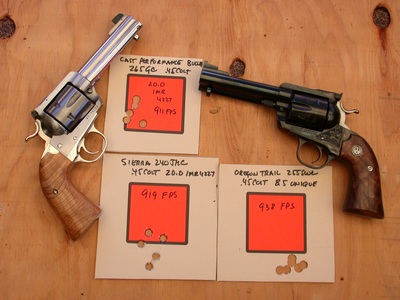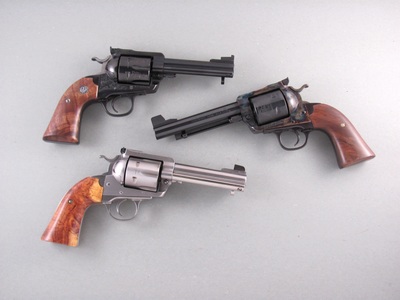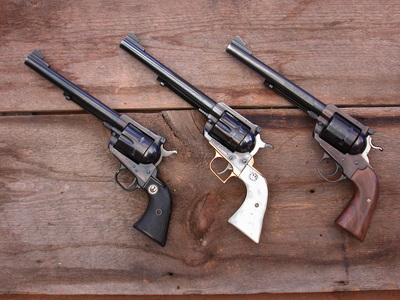Menu
60 years of the ruger blackhawk
THE .41 MAGNUM (1965) AND .30 CARBINE (1968)
Such sixgunners as Elmer Keith, Bill Jordan, and Skeeter Skelton began asking for a new Magnum to fit in between the .357 Magnum and the .44 Magnum. The result was the .41 Magnum with Smith & Wesson bringing out the first sixguns in 1964. Ruger followed with both 4-5/8” and 6-1/2” Blackhawk versions in 1965. I have been shooting both for several decades now and as with others corrected the “mistake” made by Ruger and had one 6-1/2” .41 Blackhawk cut to 5-1/2”. I’ve never been completely happy with any 6-1/2” barrel Blackhawks and the one-inch shorter length seems to make a huge difference for me both in holstering and balance when shooting.
Such sixgunners as Elmer Keith, Bill Jordan, and Skeeter Skelton began asking for a new Magnum to fit in between the .357 Magnum and the .44 Magnum. The result was the .41 Magnum with Smith & Wesson bringing out the first sixguns in 1964. Ruger followed with both 4-5/8” and 6-1/2” Blackhawk versions in 1965. I have been shooting both for several decades now and as with others corrected the “mistake” made by Ruger and had one 6-1/2” .41 Blackhawk cut to 5-1/2”. I’ve never been completely happy with any 6-1/2” barrel Blackhawks and the one-inch shorter length seems to make a huge difference for me both in holstering and balance when shooting.
I remember in an old American Rifleman magazine which came out sometime after WWII seeing a custom Colt Single Action Army, actually a Bisley Model, chambered in .30 Carbine. Apparently some G.I. who had served in the Pacific had this sixgun made up for him especially. There may have been a few others who had custom .30 Carbine Colt Single Actions made up and even Smith & Wesson had at least one prototype chambered in .30 Carbine. However, it remained for Bill Ruger to offer a standard production single action with his .30 Carbine Blackhawk in 1968. Now Ruger not only offered the three magnums but also a varmint-getting Blackhawk. Some had the 30 Carbine cylinder re-chambered to the old .32-20, however the better solution is to have an extra cylinder fashioned.
AT LAST A .45 COLT BLACKHAWK (1970)
From 1969 to 1971 I spent three absolutely miserable summers in graduate school. What really made it so unappealing was being away from my young family during the summer months. I was also bored with little to do. One afternoon I visited the local gun shop and noticed something totally different in the glass case. There in a yellow and black box was a 7-1/2” Ruger Blackhawk. Now by this time Ruger was making the .357 Magnum, the .41 Magnum, and the .30 Carbine with only the latter one having the longer barrel. This was not a .30 Carbine! What it was turned out to be the first .45 Colt Ruger I had ever seen or even heard of. I made arrangements to purchase it immediately and have it shipped back home. Not only was it a .45 Colt it also had a little red bag in the box with a .45 ACP cylinder. I had literally struck gold.
I earlier mentioned Ruger’s plan to chamber the original .357 Magnum Blackhawk to .45 Colt. This .45 in front of me was not on the original Colt SAA-size frame but rather the same size frame and cylinder as the Super Blackhawk. Suddenly, for the first time ever, we had a .45 Colt single action sixgun capable of actually taking advantage of the large powder space of the .45 Colt cartridge. Up to this time we had pushed the Colt Single Action to the edge, sometimes too far, but now we had a .45 Colt Blackhawk which was immensely stronger than the original Colt. In later years John Linebaugh figured out the .45 Colt Blackhawk was safe with cartridges up to 32,000 psi.
The new .45 was a natural for heavier bullets and both my friend Jim Taylor and I experimented with .45-70 bullets. We use the Lyman 300 grain #457191 size to .452 and I also use 300 grain jacketed .45-70 bullets by sizing them down in three steps using plenty of oil in the sizing dies. I went through .458”, .454”, and finally .452”bullets. Life became much easier when NEI offered two Keith-style heavy bullets, 310 and 325 grain, and SSK came out with a 340 grain flat-nosed cast bullet. Shooting any of these bullets to about 1,200 fps opened up a whole new chapter for the .45 Colt. I have even taken a buffalo with one of these loads; one-shot kill.
THE NEW MODEL BLACKHAWK (1973)
From time immemorial, well at least back to the Walker Colt of 1847, savvy sixgunners knew to always carry an empty chamber under the hammer, unless the particular sixgun such as the Remington 1858 had a sturdy safety slot built into the cylinder to accept the hammer. With the coming of the Colt Single Action Army in 1873 the code became: “Load One-Skip One-Load Four-Lower The Hammer On An Empty Chamber.” Way too many new shooters did not understand this and Ruger got tired of fighting lawsuits because of negligent shooters harming themselves or others by not letting the hammer down on an empty.
In 1973 Ruger introduced the New Model Blackhawks complete with a transfer bar safety. Up to this time all single action sixguns, including Colt SAAs, replicas thereof, and all Ruger Blackhawks with Three Screws in the side of the frame could only be carried safely with the hammer down on the empty chamber. Now Ruger’s new Blackhawks on the New Model pattern were safe fully loaded. It is easy to tell which is which at a glance as the older Ruger’s have the above-mentioned Three Screws in the side of the frame while the New Models have two pins.
When the old-style action was dropped in favor of the Transfer Bar actions I was not particularly pleased. However, as time has passed I realized how important this change was for safety sake. Skeeter Skelton called it a great step forward. I have now arrived at the point of my life when I appreciate the convenience of the transfer bar when it comes to loading, carrying, and unloading. It is much simpler just to open the loading gate and rotate the cylinder of the New Models than to bring the hammer to half cock, open the loading gate and rotate the cylinder of the Old Models. It wasn’t long before custom sixgunsmiths also learned how to smooth out the New Model action so it was as nice, sometimes even better, than the old-style.
With the coming of the New Model action Ruger dropped the medium Colt Single Action-sized frame as had been used on the .357 Blackhawk since 1955 and henceforth all centerfire Blackhawks were built on the same large frame as the .44 Magnum Super Blackhawk.
THE .357 MAXIMUM (1983)
In the late 1970s/early 1980s long-range silhouetting was sweeping across the country and Ruger responded by offering their Super Blackhawk with a 10-1/2” barrel. Both Diamond Dot and I competed using the new Super Blackhawk and since we used different loads and had different sight settings we had a pair. After we quit competing both of these guns were turned into shorter barreled custom sixguns and I replaced them with what was then the new stainless steel 10-1/2” Super Blackhawk which is an excellent single action hunting handgun.
Ruger went somewhat radical in 1983 bringing out there stretched frame revolver, the Maximum. This used a 1.6”cartridge case instead of the traditional 1.3” version and was designed specifically for long-range silhouetting. It was killed off by some writers who did not understand the purpose and tried to turn it into a .357 Swift using lightweight bullets and hyper velocities which caused premature erosion on the bottom of the top strap. The cartridge and the sixgun were designed to use 180-200 grain bullets at standard .357 Magnum velocities. When this was adhered to the sixgun worked fine, still does, and shot incredibly accurate. In fact my .357 Maximum Ruger with a 10-1/2” barrel is most accurate Ruger I have ever shot.
THE BISLEY MODEL (1986)
In 1959 Ruger changed their grip frame by using the Dragoon-style on their Super Blackhawk. In 1962 they went to the XR3-RED design on all their standard Blackhawks. Neither one of these were very appealing to me, however all was forgiven in 1986 when Ruger introduced their Bisley Model Blackhawk. The original Bisley Model was offered by Colt in the 1890s as a single action target pistol using a ladle shaped handle that did not roll up in the hand under recoil. In the late 1920s Elmer Keith improved the Bisley Model grip frame to what is known as his #5 frame. Bill Ruger probably looked at both of these and came out with a truly improved version. For my hand the Colt rides up too high behind the trigger guard while the #5 is too small; Ruger’s design is about as perfect as it comes.
For most shooters the Bisley Model grip frame handles recoil of single action sixguns better than any other design yet conceived. Ruger brought out the Bisley Model only with 7-1/2” barrels and chambered in .357 Magnum, .41 Magnum, .44 Magnum, and .45 Colt. Heavy loads now were exceptionally easy to handle. Over the years special runs have been offered with shorter barrels and in stainless steel also. As I’ve gotten older I have found the 5-1/2”barrel more appealing and I have had my .41, .44, and .45 Colt versions all cut back to this length and refinished by Ben Forkin who also had the frames and hammers color case hardened by Turnbull. The .357 Magnum version has been gold embellished by Gary Reeder after being re-blued using his beautiful black oxide finish and fitted with an extra cylinder in .356 GNR.
Proudly powered by Weebly
